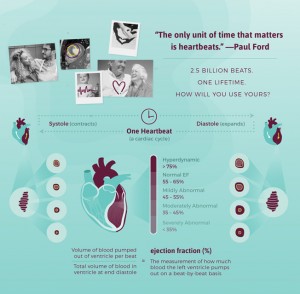Even basic cable has an overwhelming number “bowl” (American football) games. Mostly corporate sponsor names although the Cure Bowl” was sponsored by AutoNation. It’s for a worthy cause (breast cancer research) but that isn’t obvious from a TV listing.
If you aren’t interested in encouraging physical injuries, including concussions, you have to look elsewhere for bowl game excitement.
Have you considered the Second Annual Data Science Bowl?
From the web page:
We all have a heart. Although we often take it for granted, it’s our heart that gives us the moments in life to imagine, create, and discover. Yet cardiovascular disease threatens to take away these moments. Each day, 1,500 people in the U.S. alone are diagnosed with heart failure—but together, we can help. We can use data science to transform how we diagnose heart disease. By putting data science to work in the cardiology field, we can empower doctors to help more people live longer lives and spend more time with those that they love.
Declining cardiac function is a key indicator of heart disease. Doctors determine cardiac function by measuring end-systolic and end-diastolic volumes (i.e., the size of one chamber of the heart at the beginning and middle of each heartbeat), which are then used to derive the ejection fraction (EF). EF is the percentage of blood ejected from the left ventricle with each heartbeat. Both the volumes and the ejection fraction are predictive of heart disease. While a number of technologies can measure volumes or EF, Magnetic Resonance Imaging (MRI) is considered the gold standard test to accurately assess the heart’s squeezing ability.
The challenge with using MRI to measure cardiac volumes and derive ejection fraction, however, is that the process is manual and slow. A skilled cardiologist must analyze MRI scans to determine EF. The process can take up to 20 minutes to complete—time the cardiologist could be spending with his or her patients. Making this measurement process more efficient will enhance doctors’ ability to diagnose heart conditions early, and carries broad implications for advancing the science of heart disease treatment.
The 2015 Data Science Bowl challenges you to create an algorithm to automatically measure end-systolic and end-diastolic volumes in cardiac MRIs. You will examine MRI images from more than 1,000 patients. This data set was compiled by the National Institutes of Health and Children’s National Medical Center and is an order of magnitude larger than any cardiac MRI data set released previously. With it comes the opportunity for the data science community to take action to transform how we diagnose heart disease.
This is not an easy task, but together we can push the limits of what’s possible. We can give people the opportunity to spend more time with the ones they love, for longer than ever before.
Timeline:
- February 29, 2016 – First submission and team merger deadline. Your team must make its first submission by this deadline. This is also the last day you may merge with another team.
- March 7, 2016 – Stage one deadline and stage two data release. Your model must be finalized and uploaded to Kaggle by this deadline. After this deadline, the test set is released, the answers to the validation set are released, and participants make predictions on the test set.
- March 14, 2016 – Final submission deadline.
Motivations (in no particular order):
- Bragging rights!
- Experience with complex data modeling problem.
- Prizes:
- 1st place – $125,000
- 2nd place – $50,000
- 3rd place – $25,000
- Substantial contribution to bioinformatics/heart research
I first saw this in a tweet by Kirk Borne.
